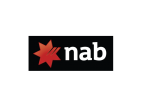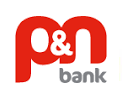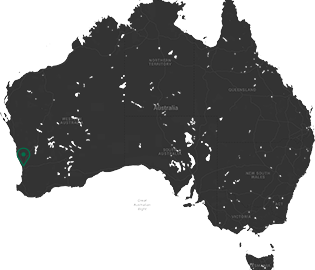1. When was your last financial check-up?
2. Quick-fix home improvements
3. Controlling your credit cards
4. Selecting your perfect investment property
5 Market Update
Dear Valued Clients,
Welcome to the summer edition of Mortgage News.
With the start of the New Year, talk turns to resolutions and goals for the year ahead and now is the perfect time to evaluate your financial health. In this edition of Mortgage News we have provided you with a financial check-up to ensure you are on your way to achieving your goals in 2014.
Summer is the ideal time to get those little jobs around the house done and add value to your property. In this edition we look at a number of small jobs that you can get done around your house in just a weekend that can add maximum impact.
Credit card debts have a habit of spiralling out of control around this time of year, so we have come up with some quick tips to get your debt back under control without having to cut up your credit cards.
Finally, if you are looking to invest in 2014, you should read our article about finding the perfect investment property. We uncover the top considerations regarding location and property type to be made before jumping into the investment pool.
If you wish to discuss anything outlined in this newsletter, or simply want to chat, give us a call today!
Yours Sincerely,
Galvin Dawson
Director
Finance Edge Australia Pty Ltd

Summer is usually the time when we are most motivated to improve our lives, whether it’s by losing those extra winter kilos or finishing that weekend renovation you started. So while you are reassessing and changing other areas of your life, why not look in to your financial health with a quick check-up?
Creating budgets and saving money aren’t usually things we like to talk about, but checking in on our financial health every once in a while could mean the difference between reaching our financial goals and being unaware of what our financial goals even are.
So if it’s been a while since you evaluated your financial position, where should you start?
Before you start budgeting, set some financial goals. These could be short-term goals like a weekend vacation, a new pair of shoes or a new car. Also look at the long-term goals, such as owning your home, being debt free, or diving into property investment.
Set a timeframe in which you want to achieve these goals and design your budget accordingly. Having clear, achievable goals will keep you on track to financial freedom and help you live your ideal lifestyle.
A budget is a great way to keep track of all of your expenses and income. Use this on a weekly, fortnightly or monthly basis to monitor your cash flow. It is important to consider all expenses you may incur, remembering to include things like registration, insurance and taxes, which may not be due on a regular basis.
Setting a budget is also a great way to find areas where you might be able to cut back, allowing you to find the extra money to achieve your financial goals. This may be as simple as skipping your afternoon coffee or reducing your gym membership. Every little saving helps you get closer to your financial goals.
The next area to consider in your financial health check is your mortgage and personal loans. Are these still working in your favour? Could you be getting a better deal?
You should seek professional advice when it comes to evaluating your loans, as there might be hidden terms and conditions that could limit what you can and can’t do. This could include being locked in to your loan for a certain period of time, break costs or switching fees if you choose to switch your loan.
Summer is a great time to evaluate your financial health and make changes to achieve your financial goals sooner. If you would like help with your financial health check, give us a call today.

You’ve been thinking about giving your home a freshen-up for a while, but you just can’t seem to find the time
If you have just one spare weekend and you want to make some quick improvements to your home for the highest value-add, these are the areas you need to concentrate on.
Make a good first impression
First impressions count. If you are looking to add value to your house, start with curb appeal. Tidy the front yard by removing any overgrown trees, and spruce up your driveway and front bricks with the help of a pressure hose. You should be able to find one on the cheap by flicking through the local paper, but if you are unable to find an affordable solution, an old broom and some bleach or soapy water will scrub off any stubborn spots. A new letter box and door handle are quick and cheap fixes that can add to the overall appearance of your front yard.
These are simple fixes that can be made over a weekend and will gain you mega points with neighbours and friends.
A new look
Do you have a spare room that needs a little bit of attention? A fresh coat of paint can make all the difference, but there are a few rules to follow. Neutral colours are perfect if you are not sure what you want to use the room for or are thinking of putting your house on the market in the near future, while feature walls are a great way to add a pop of colour to brighten up a room.
If painting is not your speciality, have a practice run on a less prominent area, such as a wall behind a wardrobe. Once you find your confidence, you’ll be painting like a pro.
Replace fixtures and fittings
One factor that makes a property look tired and old is out-dated or tarnished door handles, light fittings and skirting boards.
By replacing old fittings and fixtures with modern designs, you can instantly add life to your home. There is minimal professional knowledge required for these touch-ups, so they can be replaced quickly and easily, with maximum impact.
Your local hardware store is sure to house everything you need. But be warned, prices will vary greatly and it pays to shop around prior to making a purchase and consult with a qualified builder for bigger projects which may require licences.
These tasks usually do not require large amounts of time or money to complete. They will, however, freshen up your home and add value with very little effort.
![]()
| Take the stairs as often as possible
It seems like a no-brainer, but we are often in such a rush we jump in the elevator without thinking. The stairs may take an extra few minutes but you will be getting your workout without even having to go to the gym. If you have to travel more than a few flights of stairs, you could try walking the first three to five flights and then catch the elevator the rest of the way. Drink more water Our bodies are 90 per cent water and need water for almost every function. Many of the aches and pains, headaches and other symptoms we experience would be reduced if we drank more water. To start, swap a glass of soft drink, juice or alcohol for water and you’ll start to notice the difference. Switch up your exercise routine Sticking to the same exercise routine can be convenient, but at some point this routine may not give you the same results you have come to enjoy. As your body becomes used to a certain routine, the amount of energy used to complete the movements reduces. To kick start your metabolism and improve your results this summer, change up your workout routine every two to four weeks. |
|
|

In the current climate, many people are aiming to reduce or eliminate their credit card bills – but this isn’t as easy in reality, especially if you aren’t 100 per cent sure what you owe or how many credit cards you have
Credit cards don’t necessarily have to be a bad thing, and they don’t have to be something you shy away from – as long as you manage your debt appropriately and only make realistic purchases.
The first step you should take to get your credit cards under control is to evaluate your current financial position. Find out exactly how many credit cards you have and what is owed on each. If possible, consolidate all of these in to one monthly payment that is easily manageable.
Once you have consolidated your debt, it is time to put a plan in place to ensure you keep your credit card debt under control. Find out what your minimum monthly repayments are and aim to pay off a little extra each month.
As an example, on a $1,000 debt, if you were to pay an extra $20 a month on top of a minimum monthly repayment of $50, you could save yourself approximately eight months and more than $100 in interest.
While a credit card can be a useful way to generate a positive credit rating and is good to have around when unexpected expenses arise, it is important to keep your spending under control. If you are finding it difficult to keep a hold on your spending, an option may be to cut up the card and pay cash instead – this way you can be sure you are only spending what you can afford.

While proximity to family and friends and property features may be most important when buying your family home, there are a number of other considerations that need to be made when purchasing an investment property
Before committing to an investment property, consider the following factors that can impact the success of your investment.
Overall investment goals
There are many different ways to invest in real estate, from single family homes to industrial buildings. It is therefore important to consider your investment goals when choosing which suburb and property to invest in. Your investment goals will also help you decide how much you are willing to spend and whether you are willing to consider properties interstate or if you are looking for local properties you can manage yourself.
Demand
It is important to consider the demographics of the area you intend to invest in. Are you targeting young couples, families or students? This will give you a good indication of the type of properties you should be looking for. Young couples will probably be looking for units close to major cities, while families are often looking for houses in the suburbs that are close to schools and other amenities.
Tenant friendly
To ensure your investment property is tenant friendly, it is important to consider how close your property is to amenities such as public transport, schools, shops and cities. If the area you are looking to invest in has a number of these amenities close by, it is probably going to rent quicker and stay rented for longer, helping you reach your investment goals sooner.
These considerations will give you a good indication of the suburbs and properties you should be looking at in order to achieve your desired investment outcome. Once you are clear about the type of property you are looking for, have an idea of the area and your affordability, get out there and find them.

While 2013 saw rates hit an all-time low and the construction sector struggle, 2014 is looking positive with residential construction recovering and the rate easing cycle coming to an end.
According to predictions from the Housing Industry Association (HIA), the residential construction sector recovery is well underway and should continue in 2014.1
“The improving level of dwelling commencements achieved in 2012/2013 will be consolidated in 2013 before moving up a further leg in 2014/2015,” HIA senior economist Shane Garrett said.
The association’s quarterly National Outlook highlights the revival of the residential construction industry since its trough in 2011.
According to the report, Queensland is set to be the strongest contributor to the sector’s rise.
The data suggests New South Wales and Western Australia will maintain current high levels of housing starts into 2014, with an annual increase of 11.1 per cent for NSW and 8.5 per cent for WA.
While residential construction is just gearing up, the rate cutting cycle appears to be at an end as the Reserve Bank of Australia (RBA) waits to determine the full effects of recent rate cuts on the economy.
According to Glenn Stevens, RBA governor, the easing in monetary policy that has already occurred since late 2011 has supported interest-sensitive spending and asset values. The full effects of these decisions are still coming through, and will be for a while yet.2
“The pace of borrowing has remained relatively subdued overall to date, though recently there have been signs of increased demand for finance by households.
“Housing and equity markets have also strengthened further – trends which should in time be supportive of investment,” Mr Stevens said.
Chief economist at HSBC Paul Bloxham expects rates to start rising in the third quarter of 2014.3
Shane Oliver, chief economist of AMP Capital, shares Mr Bloxham’s views.
“We can now expect an extended period of holding from the RBA before a rise in 2014.
“The reason fixed rates are up is because bond yields are going up – that’s a sign we’ve hit the bottom… The ideal time to fix rates has passed,” Mr Oliver said.
“But there’s still plenty of great deals out there. We’re not going to see fixed rates leap all at once – but if you’re planning on fixing, it’s something to look at sooner rather than later.”
If you would like to discuss your mortgage options or if you would like to know more about any of the topics in our newsletter, please feel free to contact us today.
1http://hia.com.au/media/~/media/Files/MediaMicrosite/Media%20Releases…
2http://www.rba.gov.au/media-releases/2013/mr-13-23.html
3http://www.theadviser.com.au/breaking-news/29319-non-major-raises-fixed-rates























